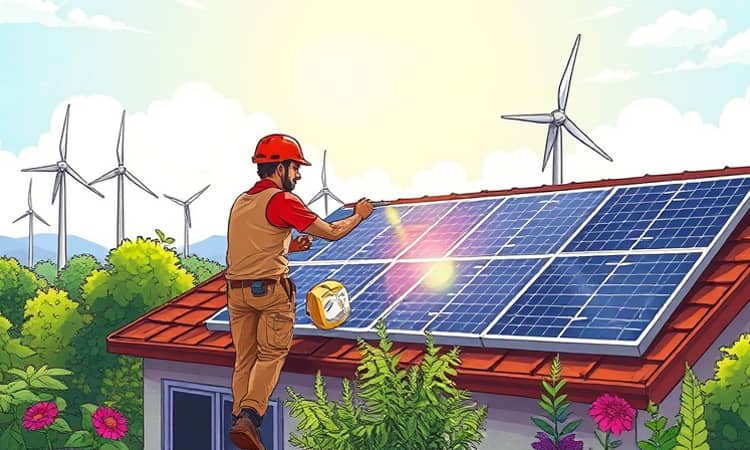As the world races to meet climate goals, individuals and businesses alike seek ways to invest in sustainability. Low interest rates and flexible terms make eco-friendly loans an attractive option to turn green aspirations into reality.
Understanding Eco-Friendly Loans
Eco-friendly, or green, loans are specialized financing products designed to support projects that deliver measurable environmental benefits and improved efficiency. Governed by the Green Loan Principles (GLPs), these loans ensure proceeds are used exclusively for qualifying initiatives, such as renewable energy installations, energy-efficient retrofits, and conservation endeavors.
By adhering to strict reporting requirements and transparent processes, lenders and borrowers collaborate to achieve both financial and ecological returns. This model has gained traction worldwide, with government bodies, commercial banks, and dedicated green banks offering tailored solutions to meet growing demand.
Key Principles and Eligibility
To maintain credibility and impact, eco-friendly loans follow a clear set of guidelines. The core Green Loan Principles include:
- Use of proceeds strictly for qualifying green projects
- A transparent project evaluation and selection process
- Transparent management and tracking of funds
- Ongoing reporting on environmental impact and fund utilization
Eligible projects span residential solar arrays, commercial wind farms, electric vehicle fleets, water conservation systems, and habitat restoration efforts. Each initiative must demonstrate a quantifiable reduction in carbon emissions, resource usage, or ecological footprint.
Market Trends and Growth
The global sustainable bond market, which encompasses both green bonds and loans, is projected to hit $1 trillion in annual issuance by 2025. This explosive growth underscores the robust appetite for financing that aligns with environmental stewardship.
Lenders range from large multinational banks offering corporate green facilities to community-based credit unions providing low-rate consumer loans. Peer-to-peer platforms have also emerged, allowing individuals to fund local eco-projects directly through online networks.
Benefits of Green Loans
- For Borrowers: Access affordable financing for clean-energy projects, leading to substantial long-term cost savings and increased property value.
- For Lenders: Achieve corporate ESG goals, enhance brand reputation, and tap into a growing sustainable finance market.
- For the Environment: Support the transition to renewable energy, accelerate the shift toward renewables, and reduce pollutants.
Borrowers often benefit from fixed interest rates, zero prepayment penalties, and government incentives such as tax credits or rebates. Over time, efficiency upgrades can pay for themselves through lower utility bills and maintenance costs.
Types of Sustainable Financing
Popular Eco-Friendly Loan Providers
Across the United States, credit unions like Clean Energy Credit Union and VSECU have become pioneers in green lending, offering terms up to 20 years, minimal or no upfront payments, and no prepayment penalties. Major commercial banks also provide substantial green facilities for large-scale projects, supporting everything from utility-scale wind farms to energy-efficient corporate campuses.
Regional clean-energy lenders often bundle loans with advisory services to help clients select the best technologies, secure incentives, and navigate reporting obligations. This holistic approach ensures projects deliver both financial returns and environmental impact.
Comparing Green Loans to Traditional Financing
Unlike standard loans, eco-friendly financing requires strict monitoring of fund use and impact measurement. Environmental projects must meet predefined criteria, and borrowers usually submit periodic reports documenting energy savings or emission reductions. These additional steps reinforce accountability and safeguard against greenwashing—the misrepresentation of environmental benefits.
Overcoming Challenges and Avoiding Greenwashing
As the green finance market matures, regulatory bodies and industry coalitions are tightening standards. Borrowers should evaluate third-party certifications and request transparent disclosures from lenders. Robust due diligence is essential to ensure projects genuinely contribute to sustainability goals.
Political and economic headwinds may influence regional markets, but the long-term outlook for eco-loans remains positive. Innovations in digital financing platforms and blockchain-based tracking promise to further enhance transparency and efficiency.
How to Choose the Right Eco-Friendly Loan
Selecting the ideal loan involves careful comparison of terms and credentials. Consider these key factors:
- Interest rates, repayment period, and flexibility
- Upfront costs, fees, and potential prepayment penalties
- Eligibility requirements and documentation obligations
- Available incentives like rebates, grants, or tax credits
- Reporting standards and certification processes
Engaging with reputable financial advisors or green loan specialists can simplify the decision-making process and maximize project impact.
Case Study: Transforming Homes with Solar Loans
Consider the impact of a homeowner who installs a 7 kW solar array with a green loan. With zero down upfront and a fixed 3% interest rate over 20 years, annual energy cost savings can reach $1,500–$2,000. Over the loan term, this translates to $10,000–$70,000 in energy savings, depending on regional rates and production.
This financial model not only accelerates the homeowner’s return on investment but also cuts carbon emissions by nearly 40,000 pounds annually—illustrating how individual actions contribute to broader climate goals.
Conclusion: A Sustainable Financial Future
Eco-friendly loans represent a proven mechanism to align financial objectives with planetary well-being. By providing reduced carbon emissions and waste alongside attractive economic returns, these loans empower stakeholders to build a greener future.
As the global green finance market expands, now is the time to explore tailored eco-loan options. Whether you’re retrofitting your home, upgrading a business facility, or launching a renewable energy venture, sustainable financing can unlock new opportunities for growth and environmental stewardship.
References
- https://www.investopedia.com/what-is-a-green-loan-8696296
- https://www.worldbank.org/en/news/feature/2021/10/04/what-you-need-to-know-about-green-loans
- https://online.hbs.edu/blog/post/types-of-sustainable-debt
- https://www.aspiration.com/resources/what-is-a-green-loan
- https://www.nordea.com/en/news/what-are-green-loans
- https://www.moodys.com/web/en/us/insights/credit-risk/outlooks/esg-sustainable-finance-2025.html
- https://www.investopedia.com/terms/g/green-bond.asp
- https://www.fibe.in/blogs/what-is-green-finance/














